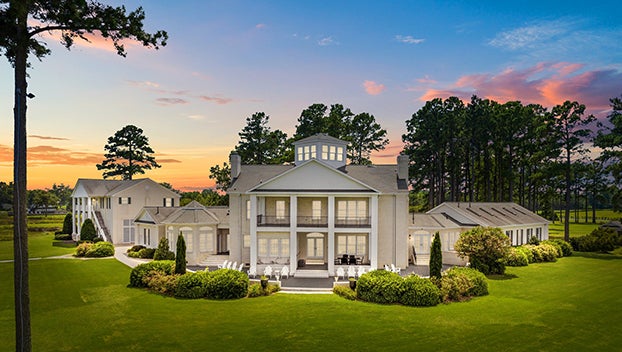Façade grants available for historic district businesses
Published 7:50 pm Thursday, September 15, 2016

- LAWFUL: The law firm of Gaskins and Gaskins occupies the Myers House on Water Street in Washington. Several Washington residences have been converted to businesses over the decades. (Vail Stewart Rumley/Daily News)
Façade grants are back, and owners and tenants have until March 1 to complete the work that could pay for half their building’s repairs.
Two grants apply: those offered by the city and by the state. Both can be used simultaneously to assist with repairs and renovations in the B1H commercial district, according to Emily Rebert, Washington’s community development planner.
“It’s a great opportunity for everyone inside the downtown commercial district,” Rebert said.
The B1H district boundaries are Bridge Street to the west, the waterfront to the south, east to the west side of Bonner Street and north up Market Street to Fourth Street.
“Once you get above Second Street on Bonner, there really aren’t too many businesses,” Rebert said.
But in the B1H commercial district there are buildings that started their lives as homes and over the decades have been turned into businesses. It’s a trend that has its roots in practicality: through the centuries, many professionals such as doctors or lawyers kept offices in their own homes, with the public only allowed into certain areas of the house — the rest was private residence. In more recent decades, as the popularity of living “in town” waned and homeowners headed to neighborhoods with homes on larger plots, older homes within commercial districts became a draw for business owners looking for a little more personality in their office space, as well as a little less on the mortgage payment.

MANY LIVES: Once a private home, a Civil War hospital and a Christian Science church, the building housing Morris Insurance on Market Street has had many lives.
Rebert said businesses that reside within homes are very much eligible for state and city façade grants, just as long as the owner/tenant has not received a façade grant in the past year. A 2-to-1 match, the grants are an opportunity for owners/tenants to recoup repair money, and some of those repairs can be expensive.
“A lot of the homes that have businesses in them are primarily wood-sided. It costs a lot of money to paint. Painting is just something that takes a lot of time to do, and it takes effort … and the cheaper you go, the less time it will last,” Rebert said. “A lot of businesses in these old homes need painting.”
When the façade grants were under review by Washington City Council last year, enough people spoke up about their importance that the $25,000 allocated to them remained. A grant from the North Carolina Department of Commerce brings an additional $30,000 to façade grant funding. Owners/tenants applying for grants can apply for both: the maximum an owner/tenant can apply for from the city is $2,000; it’s $5,000 from the Department of Commerce.
“If you spend $4,000, you’ll get $2,000 back,” Rebert said. “You don’t have to spend all that to get (a grant) — that’s the max. … Maximizing everything, if you spend $14,000, you get $7,000.”

ALL BUSINESS: A living area has been converted to a law library and conference room in the Myers House, which was built in the late 1700s.
There are some criteria that must be met. Any tenant must have the owner’s written permission to apply attached to the application; rehabilitation design proposals must meet City of Washington code requirements and design guidelines established by historic preservation; and simple sign changes are not eligible. Though any exterior renovation proposal, whether it’s an entire facade rehabilitation or maintenance items such as repainting or replacing building parts, is eligible for funding, top priority will be given to projects that will make a highly visible contribution to the commercial district, according to guidelines.
As a bonus, renovations to historic structures within the historic district also qualify for a 20-percent federal tax credit and a 20-percent state tax credit on those expenditures. Those tax credits will be attributed to the total of the repairs, as opposed to only what the owner/tenant spends, Rebert said.
Applications for both grants can be picked up from the city planning office at 102 E. Second St. during normal business hours.
“We’re using the same grant application for both of them. The state didn’t really care how we went about doing it — we just need to prove that the money was spent,” Rebert said. “They’ll have to submit two separate applications for each grant and their bills will have to be separated accordingly.”
All applications and receipts must be submitted to the planning office before March 1, 2017.
For more information about the city and state façade grants, email Emily Rebert at erebert@washingtonnc.gov.

PAST LIFE: An image of how the building housing Morris Insurance started its life as a private home.





